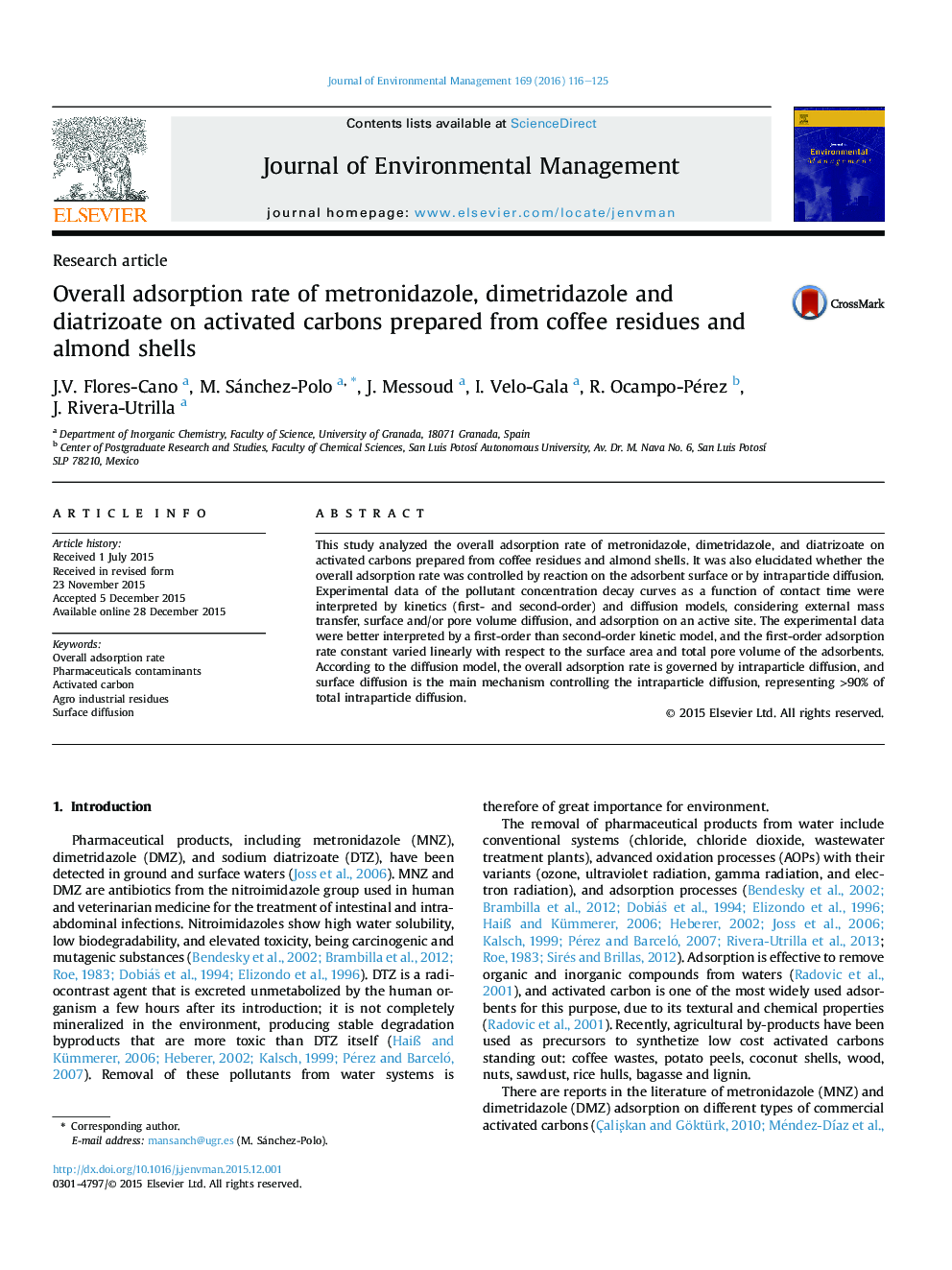| Article ID | Journal | Published Year | Pages | File Type |
|---|---|---|---|---|
| 1055442 | Journal of Environmental Management | 2016 | 10 Pages |
•Mesoporous activated carbons (ACs) were prepared from coffee waste and almond shell.•AC prepared from coffee waste had the highest adsorption capacity to MNZ, DMZ and DTZ.•Kinetic and diffusion models fitted adsorption kinetics of polluting drugs quite well.•Overall adsorption rate of all drugs is controlled by intraparticle diffusion.•Surface diffusion is the mechanism that controls the intraparticle diffusion rate.
This study analyzed the overall adsorption rate of metronidazole, dimetridazole, and diatrizoate on activated carbons prepared from coffee residues and almond shells. It was also elucidated whether the overall adsorption rate was controlled by reaction on the adsorbent surface or by intraparticle diffusion. Experimental data of the pollutant concentration decay curves as a function of contact time were interpreted by kinetics (first- and second-order) and diffusion models, considering external mass transfer, surface and/or pore volume diffusion, and adsorption on an active site. The experimental data were better interpreted by a first-order than second-order kinetic model, and the first-order adsorption rate constant varied linearly with respect to the surface area and total pore volume of the adsorbents. According to the diffusion model, the overall adsorption rate is governed by intraparticle diffusion, and surface diffusion is the main mechanism controlling the intraparticle diffusion, representing >90% of total intraparticle diffusion.
